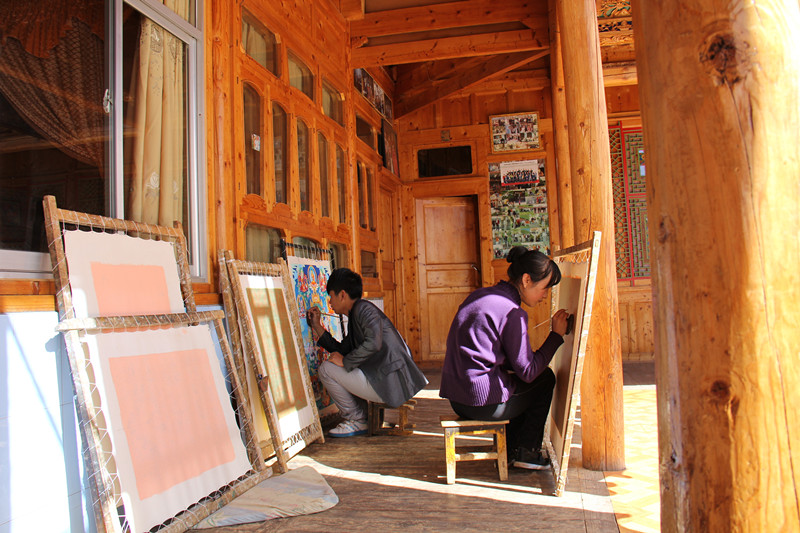
Everydody can paint in Regong [Photo/Claire_ChinaTibetonline]
In recent years, Regong art gets more and more attention to the outside world as its distinct features and profound inside. Regong art, as one of world's intangible cultural heritages is healthily protected nowadays.
Originating in the Wuhe River Valley of Qinghai Province( Tongren County of the Huangnan Tibetan Autonomous Prefecture), Regong art is a successful mix of religious art by Tibetan and Tu ethnic minorities and local folk arts. To better protect the art, it was included in the second phase of the National Folk Culture Protection Project in April 2004 and the world's human intangible cultural heritage by UNESCO in 2009.
"Everyone could paint in Regong"
The contents of Regong art ranges from the story of the Sakyamuni, Bodhisattvas, Buddhist guardians and fairies, to Buddhist stories. The art-an important genre in Tibetan Buddhism-has a history of more than 700 years.
It is called "the flower on the Tibetan Plateau" and "a magnifient pearl of Chinese art".
By the mid-17th century, Regong had become a village where nearly everyone could paint, and every family was engaged in the art. The people of Regong handed down the art from generation to generation, and now almost everyone there is an artisan.
